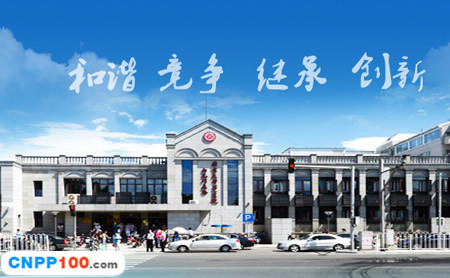
Founded in 1915, it is one of the top ten hospital service organizations, a national hospital with an early establishment of a clinical medical school, and a large-scale comprehensive tertiary first-class hospital integrating medical treatment, teaching, scientific research and prevention
Peking University First Hospital (hereinafter referred to as "Peking University Hospital") is located in the old imperial city of Beijing, is the closest hospital to Zhongnanhai, is a large-scale comprehensive tertiary first-class hospital integrating medical treatment, teaching, scientific research and prevention, and is a central health base hospital.
Founded in 1915, Peking University Hospital is the earliest national hospital in China and one of the first clinical medical schools in China. Peking University Hospital, formerly known as the Ministry of Education of the Republic of China, approved the establishment of an affiliated clinic at Beijing Medical College; In 1946, it merged with Beijing Medical College and Peking University, and was named "Peking University Hospital". In 2000, Peking University and Beijing Medical University merged again, and the hospital was renamed Peking University First Hospital. In 2008, it became a central health base hospital.
For more than 100 years, the hospital has a number of domestic pioneering professional disciplines and the first diagnosis and treatment technologies in China, such as the first pediatric department in China (1940), urology (1946), nephrology (1950), cardiovascular ward of general hospital (50s), pediatric neurology (50s), etc.; He took the lead in improving intravenous anesthesia (1951), congenital heart surgery (50s), kidney transplantation (1960), introducing intraocular lens implantation (1983), interventional treatment of coronary heart disease (1986), the first autologous blood recovery machine (1997), thoracoscopic surgery (1992), minimally invasive incision lung transplantation (2005), percutaneous ventricular reconstruction (2013), etc., and made outstanding contributions to China's medical cause.
Peking University Hospital has 36 clinical departments, 16 medical technology departments and 6 research institutes. There are a total of 64 wards with 1,574 beds. The average daily outpatient volume is more than 10,000, with more than 85,000 patients and more than 44,000 surgeries per year. There are nearly 3,500 employees in the hospital, including more than 240 senior titles and more than 330 deputy senior titles, and Professor Guo Yinglu of the Department of Urology of our hospital was elected as an academician of the Chinese Academy of Engineering in 1999.
The hospital has a complete range of disciplines, a high level of comprehensive diagnosis and treatment, and has 19 key clinical specialty projects of the National Health and Family Planning Commission, 12 leading units and participating units of national key disciplines, and a national drug clinical research base. Our hospital is a class A designated hospital for medical insurance, providing medical security services for nearly 20 million insured people in the city, and at the same time, our hospital also undertakes the public-funded medical treatment of more than 60,000 people in the city, as well as the health care tasks of cadres accounting for one-eighth of Beijing. One-third of the patients in our hospital are patients with intractable diseases from all over the country.
As the oldest affiliated clinical medical school of Peking University, the hospital has trained nearly 3,000 undergraduates and more than 3,000 postgraduates in the past 40 years, including nearly 1,700 master's students, more than 1,300 doctoral students, and nearly 70 postdoctoral fellows. At present, the hospital undertakes a large number of teaching tasks every year, including more than 260 8-year clinical students in the Department of Medicine, nearly 600 graduate students in the hospital during the same period, and about 260 undergraduates in the Department of Nursing in the same period. At the same time, the hospital also undertakes the heavy task of continuing education, and more than 40,000 people participate in residency training, further education, continuing education programs and various examinations at all levels in the hospital every year.
In the past ten years, the hospital has published more than 11,000 papers, including nearly 2,200 papers included in SCI (Science Citation Index), some of which have been published in international journals including New Engl J Med, Lancet, Blood, Am J Hum Genet, etc. More than 2,200 national, ministry-level, municipal, school-level, college-level, and horizontal projects have been approved, with an approved fund of nearly 800 million yuan. He has won 63 scientific and technological achievement awards from the state, the Ministry of Education, Beijing Municipality, and the Chinese Medical Association, among which he won the second prize of the National Science and Technology Progress Award in 2016.
Peking University Hospital has a long history and cultural heritage of more than 100 years, adhering to the motto of "Houde Shangdao", implementing the concept of "people-oriented, staff first", under the guidance of the policy of "inheritance, innovation, harmony and competition", through the hard work of all staff, and strive to build our hospital into "a paradise for staff work, a fertile soil for talent training, a palace for scientific research, a holy place for medical services, and a center for international exchange". With the continuous advancement of the reform of the national medical and health system, Peking University Hospital, as the "national team", has also kept up with the pace of the times, "conformed to the medical reform and stable development", and made every effort to improve the medical and health environment and facilitate the people's medical treatment.












